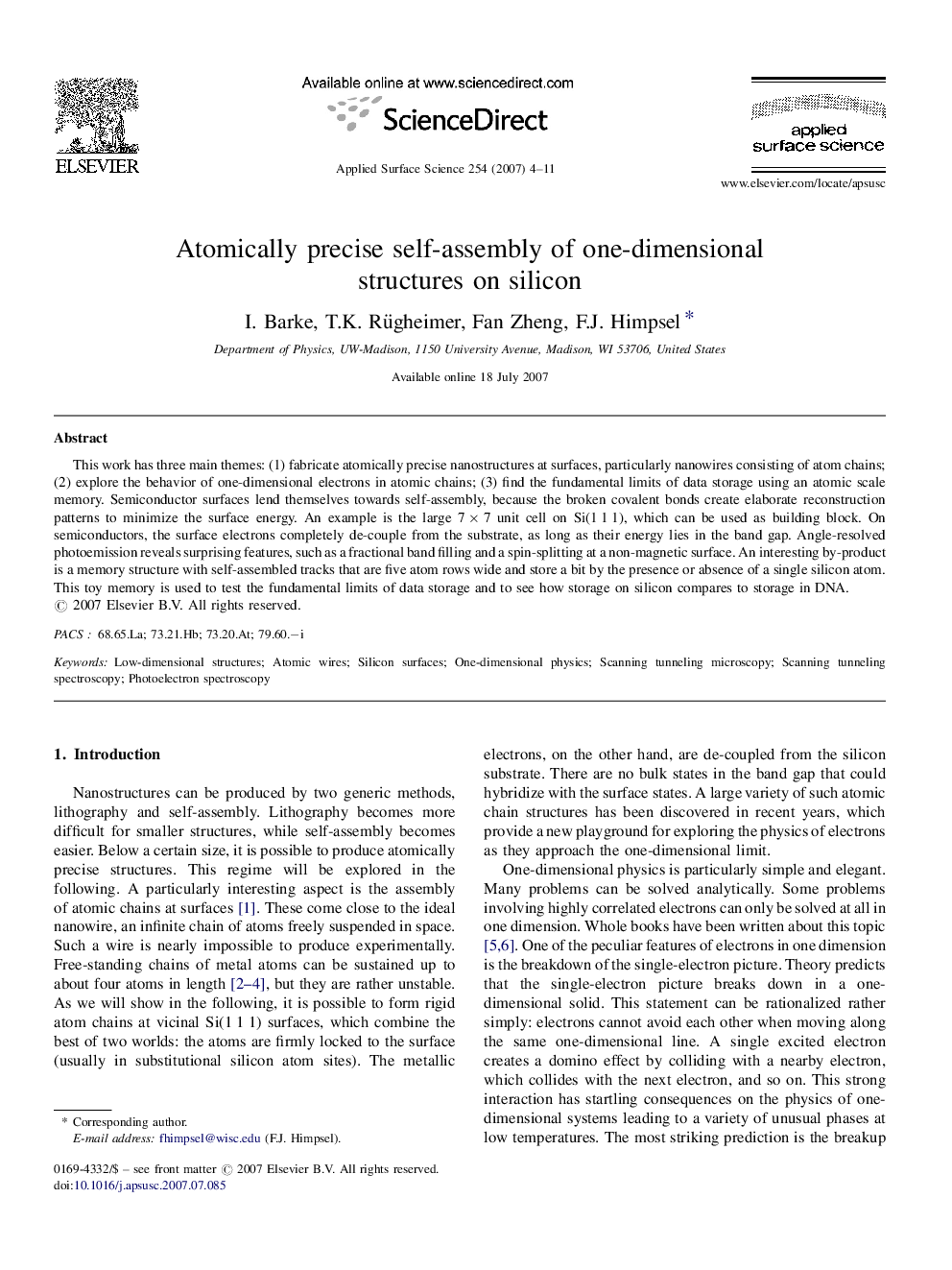| Article ID | Journal | Published Year | Pages | File Type |
|---|---|---|---|---|
| 5368286 | Applied Surface Science | 2007 | 8 Pages |
This work has three main themes: (1) fabricate atomically precise nanostructures at surfaces, particularly nanowires consisting of atom chains; (2) explore the behavior of one-dimensional electrons in atomic chains; (3) find the fundamental limits of data storage using an atomic scale memory. Semiconductor surfaces lend themselves towards self-assembly, because the broken covalent bonds create elaborate reconstruction patterns to minimize the surface energy. An example is the large 7Â ÃÂ 7 unit cell on Si(1Â 1Â 1), which can be used as building block. On semiconductors, the surface electrons completely de-couple from the substrate, as long as their energy lies in the band gap. Angle-resolved photoemission reveals surprising features, such as a fractional band filling and a spin-splitting at a non-magnetic surface. An interesting by-product is a memory structure with self-assembled tracks that are five atom rows wide and store a bit by the presence or absence of a single silicon atom. This toy memory is used to test the fundamental limits of data storage and to see how storage on silicon compares to storage in DNA.
